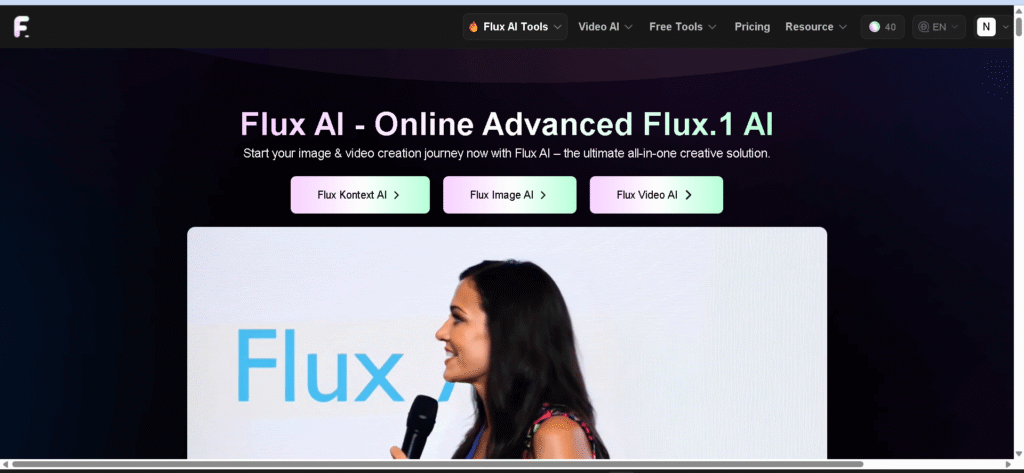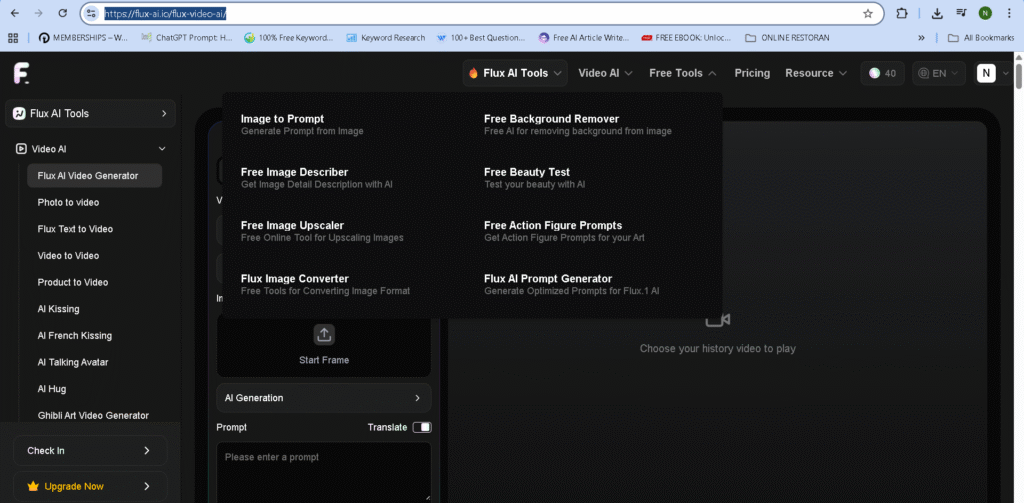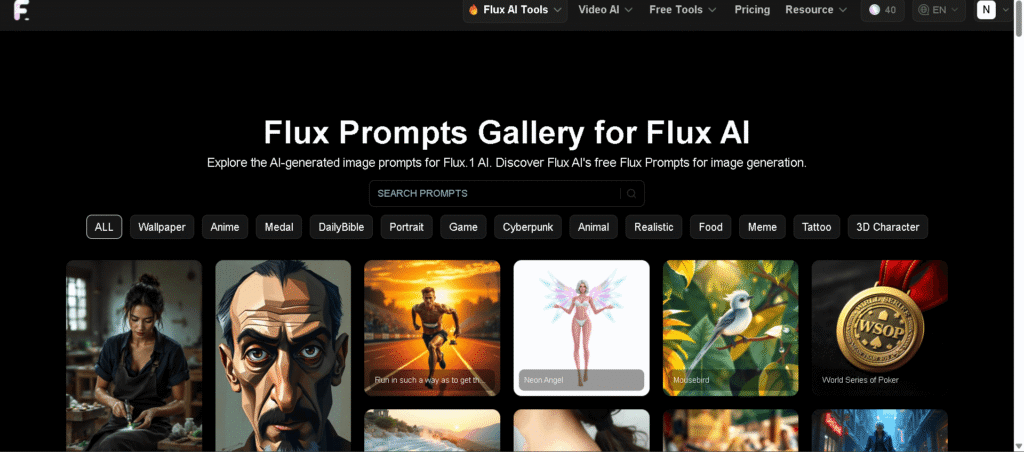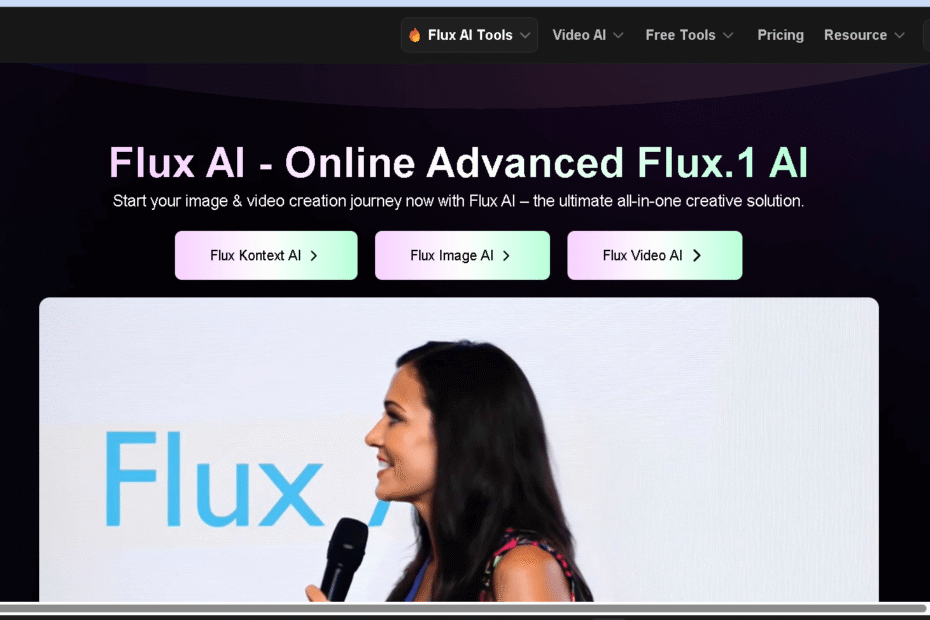Flux AI Image to Video is a tool that turns text or images into videos using artificial intelligence. It makes video creation faster and easier by automating the process.
You can create videos up to 1080p resolution without needing advanced skills. This tool stands out because it quickly transforms simple photos or text into engaging video content.
Users can make short animations from pictures in just seconds. That makes it handy for social media posts, promotions, or even just fun personal projects.
The platform lets you combine image upload and video generation in one flexible system. That’s pretty convenient if you’re juggling different types of content.

What Is Flux AI Video Generator?
Flux AI Video Generator is a digital tool that uses artificial intelligence to turn text and images into videos. It helps users create video content quickly, no fancy editing skills required.
The platform focuses on automation and easy-to-use features. It makes video creation accessible for lots of different purposes.
Minimax AI Video Generator Revolutionizing Content Creation
Overview of Flux AI Image to Video
Flux AI is a platform built to automate video production through AI technology. It takes your text or images and generates professional-level videos.
The system supports multiple creative formats, like text-to-video and image-to-video transformations. That flexibility is a big plus.
You’ll probably appreciate how Flux AI speeds up video creation. There’s less need for manual editing or filming.
It’s aimed at content creators, marketers, and businesses looking to make video content efficiently. The tool puts quality and professional results front and center, without all the complicated setups or software.
AI Video Creation Explained
Flux AI analyzes your input—text or pictures—and recreates it as video content. The AI uses advanced models to synthesize visuals, motion, and sometimes audio.
That’s how it produces a seamless final video output.
Flux AI’s workflow includes these key steps:
- Input: Users submit text descriptions or images.
- Processing: The AI translates these inputs into video scenes.
- Output: The final video is rendered automatically and ready for download or sharing.
This method cuts out the hassle of traditional filming or fiddling with editing software.
Everything just happens in one go, so making videos gets way quicker—and honestly, it saves a ton of money, too.

Core Features and Capabilities
The Flux AI Video Generator makes it pretty easy to turn text and images into detailed videos. It leans on advanced AI to handle tricky stuff like motion and scene composition.
You get high-quality output, simple prompt controls, and a user-friendly interface. That’s the pitch, anyway.
High-Resolution Output
Flux AI Video Generator delivers videos in high resolution, so details stay sharp. The platform supports HD and even higher resolutions, which matters if you’re aiming for professional results.
Their AI models work behind the scenes to boost image textures and keep video clarity high. The tool also tweaks video frames to cut down on noise and hold onto accurate colors.
Scenes look more natural, and motion ends up smoother. That’s especially handy for marketing, education, or any project where visuals need to impress.
Prompt-Based Animation
One of Flux AI’s standout features is building animations from plain text prompts. Just type a description, and the AI whips up scenes with motion that matches your words.
You can also animate existing images by letting the AI add movement based on what it understands from the picture. Still photos get a new life as dynamic videos, thanks to motion synthesis.
User Experience and Interface
The platform’s interface feels straightforward, guiding you step by step. Editing tools offer smart suggestions, making it easier to tweak video elements on the fly.
You can jump between text-to-video and image-to-video options without hassle. Beginners won’t get lost, but there’s still enough control for folks who want to dig deeper. That blend of flexibility and simplicity makes creative work a bit less stressful, honestly.

Vidnoz AI Review: Is it the Best Free AI Video Generator?
Flux AI Models and Architectures
This ai tool uses a mix of models and tools to turn text or images into visuals. These models aim for detailed results and lean on AI to boost video quality.
Types of Flux Models
Flux AI packs several models, each meant for a different job. The main Flux model handles generating high-quality images from text prompts. It really tries to nail the details and variety in what it produces.
There’s also the T5 text encoder. This part turns text descriptions into something the AI can actually process, making the final images line up better with what you asked for.
LoRA (Low-Rank Adaptation) is another handy tool. It lets Flux models pick up new styles or image features faster by tweaking just a small part of the network. No need to retrain the whole thing. That saves time and makes Flux more flexible.
Specialized Tools in Flux AI Image to Video
Flux AI doesn’t stop at images. It can combine its image models with tools for making videos. The core image generator is all about still images, but if you pair it with image-to-video AI models, you get video creation.
Some tools inside Flux AI handle upscaling video resolution. They work frame-by-frame to sharpen details. These tools team up with the Flux Pro AI platform and Kling AI video model to push video quality even further.
Flux AI’s architecture lets all these tools play well together. With this modular design, users can build complex video content from just a simple text prompt or image. It’s a pretty clever setup—though, of course, there’s always room for improvement.
Image-to-Video Workflow Using Flux AI
Flux AI lets you turn still images into dynamic videos. The process is pretty straightforward, but there are a few details to watch out for.
Steps to Transform Images into Videos
Start by uploading a high-quality image—something clear and detailed works best as your video base. You can also add an optional end frame if you want to show a final scene.
Flux AI supports images up to 5 MB. After uploading, pick your video duration, mode, and aspect ratio.
There are two modes: Standard and Pro. Standard mode uses fewer credits and gives you basic quality, while Pro mode costs more credits but unlocks higher-quality visuals and extra features like end frames.
Once you’ve set your preferences, you can write a descriptive prompt to guide the AI on style and movement. When you’re ready, hit generate and wait about 5 to 10 minutes.
You’ll be able to download the finished video directly from the interface. It’s pretty satisfying to see your image come to life.
Customizing Results
Customization revolves around the creativity setting and your prompt input. The creativity slider changes how much randomness the AI uses.
Lower creativity values give you smoother, more predictable animations that stick closely to your prompt. Higher values mix in more variation and sometimes unexpected effects.
Your prompt should clearly describe realistic motions or actions that fit the image. If the prompt doesn’t match, the video might look weird or disconnected from the original.
Video resolution depends on the size of your uploaded image. Using a high-res image definitely helps the output look better.
You can also choose different generation versions. Newer models usually give you better motion and detail, but sometimes they limit features to Pro mode or shorter video lengths.
Credits get used up based on your settings. Standard mode costs 60 credits per 5 seconds, and Pro mode costs 210 credits per 5 seconds.
If the system runs into technical problems and can’t generate your video, it automatically refunds your credits.
System Requirements and Performance Considerations
Running Flux AI Video Generator takes a mix of solid hardware and smart system tweaks. You’ll want to pay attention to system memory, GPU strength, and how to tweak settings if your resources are stretched thin.
RAM and Hardware Needs
Flux AI Video Generator asks for at least 8GB of VRAM on a CUDA-compatible GPU just to get started. If you’re editing video at 1080p, you’ll have a much better time with 12GB of VRAM or more.
System RAM should hit 16GB at minimum. But honestly, 32GB or higher really helps if you’re juggling big projects or high-res video files.
A quick multi-core CPU helps with parallel tasks, though it’s not as crucial as GPU and RAM. You’ll need at least a 500GB SSD, but 1TB (or more) is way more comfortable for storing chunky video files.
Optimizing for Limited Resources
If your hardware isn’t quite up to snuff, you can still make things work. Dropping your video resolution or cutting the frame count will ease up on memory demands.
Some versions of Flux AI run lighter and faster, so try those if your system’s struggling. Running Flux AI in FP16 precision mode cuts down VRAM use—honestly, most folks won’t notice a big drop in quality.
Kill off unnecessary background apps to free up RAM and CPU. And, yeah, don’t forget to update your GPU drivers and CUDA toolkit. It sounds obvious, but it really does help keep everything running smoother when you’re generating.
Popular Applications and Creative Use Cases
Flux AI Video Generator shows up in all sorts of fields, letting people whip up videos from text and images in no time. It helps folks make content for different goals, using AI to speed things along and toss in some visual effects.

Social Media Content Creation
Flux AI’s a hit for making social media videos fast. You just feed it a text prompt or an image, and it spits out short videos that fit TikTok or Instagram perfectly.
You can pick from vertical (9:16) or square (1:1) aspect ratios, which match what those platforms want. Creators lean on Flux AI to make eye-catching clips without having to be video editing pros.
The AI throws in animations and transitions on its own. That makes videos pop for posts, stories, or ads.
It’s a serious time-saver for influencers, marketers, and small businesses that need polished video updates all the time.
Advertising and Marketing
When it comes to advertising, Flux AI lets businesses crank out promo videos fast. The AI motion models add smooth animations and visuals that actually help tell a story.
Marketers use it to highlight products or campaigns, and they don’t have to wrestle with complicated editing. The platform hands out premade templates built for marketing, so it’s easier to keep videos looking professional and consistent.
That can boost brand engagement and reach. Still, the customization options feel a bit limited, so it’s probably best for simple, straightforward content.
Artistic and Personal Projects
Artists and hobbyists use Flux AI to turn images into videos. It can take static images from other AI image generators and animate them, giving artwork a bit of motion and life.
That means you can use it for personal storytelling, quick short films, or even creative presentations. The tool handles a lot of the heavy lifting, but you can still play around with different AI models for different video styles.
It’s a handy pick for quick visual experiments and getting content out there fast.

Frequently Asked Questions
How does the AI image-to-video transformation work?
You upload an image, and the AI jumps in to animate it based on your instructions. It adds natural, fluid motion that fits the scene, keeping the original vibe while turning your still image into something dynamic.
What file formats are supported by the video generation process?
Flux AI Video Generator works with standard image files like JPEG and PNG. The videos come out in formats that play nicely with most devices. For best results, your input image should be at least 300×300 pixels.
Is there an option for high-definition video output?
Yep, you can pick Pro Mode if you want crisp 1080p HD videos. It looks great but takes longer and uses more credits. If you’re in a hurry, Standard Mode gets you 720p quality much faster.
Can the AI video generator create content for commercial use?
This tool’s made for professional-level videos, so it’s totally up for presentations or marketing. With the right prompts, you can get original content that works for commercial projects.
What customization options are available for video creation?
You get to write detailed prompts about what’s happening in your video—subjects, actions, the whole scene. Creativity settings let you decide if you want the video to stick close to your prompt or get a bit more imaginative. You can also tweak quality and video length.
How does the AI ensure the relevance of video content to the input prompt?
The AI pays close attention to clear, specific prompts about subjects, actions, and environments. This structured info guides what it generates. If you want more creativity or more accuracy, just adjust the creativity settings to find the right balance.




